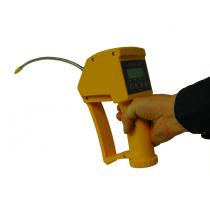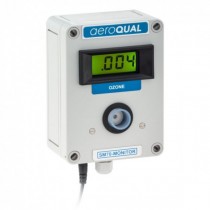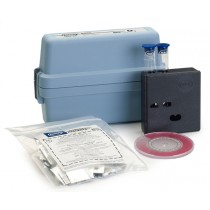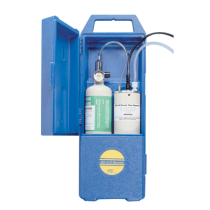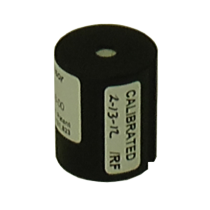Ozone Safety
Ozone Safety Concerns:
Gaseous Ozone:
-Ozone in the air can be harmful at high levels
-Short term health effects will be noticeable:
*Shortness of breath
*Headache
*Harsh breathing
*Severe pain in lungs (at levels above 1.0 ppm)
Aqueous Ozone:
-No major health concerns, aqueous ozone is very stable
-Drinking aqueous ozone may create upset stomach
-Gaseous ozone can off-gas into the air from aqueous ozone
*Ozone in air will react differently than ozone in water, therefore no major health risks exists with aqueous ozone. However, it is possible for ozone to off-gas from the water into the air, creating gaseous ozone from aqueous ozone. Keep this in mind when working with aqueous ozone.*
Ozone Regulations:
OSHA (Occupational Safety and Health Administration):
*OSHA Permissible Exposure Limit (PEL) guidelines for O3 in the workplace are based on time-weighted averages (TWA). 0.1 ppm for 8 hour work shift for a 40 hour work week.*
-OSHA requires that if you are generating ozone that you measure this ozone level for safety purposes
-The OSHA website cites the following exposure limits for ozone in the workplace:
*0.1 ppm PEL for 8 hours per day (TWA) exposure for General Industry
*0.1 ppm PEL for 8 hours per day (TWA) exposure for Construction Industry
*0.1 ppm PEL for 8 hours per day (TWA) exposure for Shipyard Employment
*0.3 ppm Short Term Exposure Limit (STEL) for a 15 minute time weighted average (TWA) exposure which is not to be exceeded at any time during a workday even if the time-weighted average is below the PEL.
Below is the calculation that can be used for the cumulative exposure for the 8 hour work shift:
(Ca Ta+Cb Tb+. . .Cn Tn)÷8 = E
*E is the equivalent exposure for the working shift. (Ozone = 0.1 ppm)
*C is the concentration during any period of time (T) where the concentration remains constant.
*T is the duration in hours of the exposure at the concentration C.
For example:
([0.5ppm x 1 hour] + [0.02 x 2 hours] + [0.052ppm x 5 hours]) ÷ 8 = 0.1 ppm
Ozone levels can be higher than the 0.1ppm standard for a short period of time as long as low levels at other times of the day still equal out to 0.1ppm of ozone over the 8 hour shift.
For example (0.1 all day):
(0.1ppm x 8 hour) ÷ 8 = 0.1
When using this calculation the value of E should never exceed 0.1 ppm of ozone in an 8 hour work shift.
For more information see the OSHA web page regarding ozone here.
NIOSH (National Institute for Occupational Safety and Health):
*NIOSH safety and health standards are not enforceable under US law. NIOSH does “develop recommendations for health and safety standards” that may influence future law and OSHA regulations.*
-Max recommended exposure limit is 0.1 PPM
-Ozone levels of 5 PPM or higher are considered immediately dangerous to life or health
-Respirator Recommendations:
*Up to 1 ppm
*Any ozone rated cartridge respirator
*Any supplied air respirator
Up to 2.5 ppm
*Any supplied air respirator operated in a continuous flow mode
*Any powered air purifying respirator
Up to 5 ppm
*Add face mask to respirator
Entrance into unknown concentrations
*Self contained breathing apparatus with full face mask
EPA (Environmental Protection Agency):
*The EPA measures, tracks, reports, and regulates ground level ambient ozone levels in large cities throughout the United States.*
Good Up High, Bad Nearby
Ground level ozone:
-Ozone near the ground is considered pollution by the EPA and is regulated
Ozone generators that are sold as air cleaners:
-EPA does not recommend, or regulate ozone generators, it does offer safety information
Ozone Air Quality Standards:
-Primary and secondary ozone standard levels are 0.070 ppm
-Primary standards set limits to protect public health, including the health of "sensitive" populations such as asthmatics, children, and the elderly.
-Secondary Standards set limits to protect public welfare, including protection against visibility impairment, damage to animals, crops, vegetation, and buildings.
-Link for Ozone safety standards from the EPA
National Ambient Air Quality Standard for Ground-Level Ozone:
| Ozone | 0.07 ppm | 8-hour |
Ozone Measurement Basics:
-Ozone is heavier than air and can sink
-Ozone has a low vapor pressure and so it does not try to fill the room uniformly.
*This makes ozone difficult to find and potentially unsafe ozone levels in one area while others are safe
*Ozone leaks are difficult to find due to this tendancy
-Ozone tends to cling to rough surfaces such as fabrics
*While you may smell ozone residual with your nose, your detector finds no ozone. This may be confusing at times
-Ozone reverts back to oxygen with a "half life" typically of 10-30 minutes.
-Ozone has a sweet smell, but the odor threshold varies widely by the person and by ambient conditions. Therefore "smell" is not a reliable test for the presence or concentration of ozone.
-Senses can be desensitized to ozone very quickly, always use high quality ozone gas detectors for safety, your nose is not acceptable.
-Most Important - What is the ozone concenctration at the breathing level where the room occuptants will be?
-Link to - Tech tip from EcoSensors on measuring ozone in air
-Link to - Tech tip on measuring ozone in room with ozone generator
Oxidation Tech offers a full range of ozone monitors:
Important Concepts Regarding Ozone Safety:
-Odor threshold of ozone is ~ 0.02 – you can smell ozone before it will harm you
-Effects of ozone exposure are a function of time and concentration
-First aid:
Low level exposure – get fresh air
High level exposure – seek medical attention
-Fix leaks


